The Angelbird Wings PX1 M.2 Adapter Review: Do M.2 SSDs Need Heatsinks?
by Billy Tallis on December 21, 2015 8:00 AM ESTRandom Write
The random write test runs for a total of 18 minutes, starting with a queue depth of 1 and doubling QD every three minutes. The test is limited to a 16GB portion of the drive and only that portion is pre-filled with data, so this test doesn't reflect the steady-state behavior of a full drive. The main scores are based on the average of QD1, QD2 and QD4 results as larger queue depths are rare for client workloads. A more detailed breakdown is graphed further down the page.
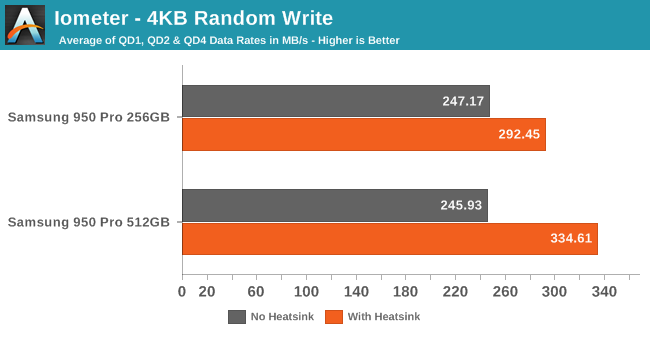
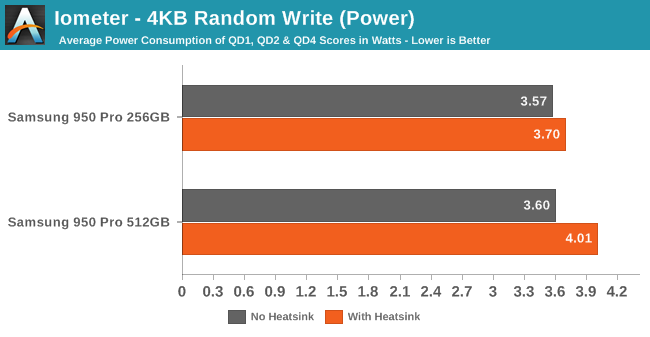
The heatsink allows the 950 Pro to reach significantly higher random write speeds, and enables the larger 512GB model to pull ahead of the 256GB model. Power comsumption increased slightly, but given the performance boost, efficiency is improved.
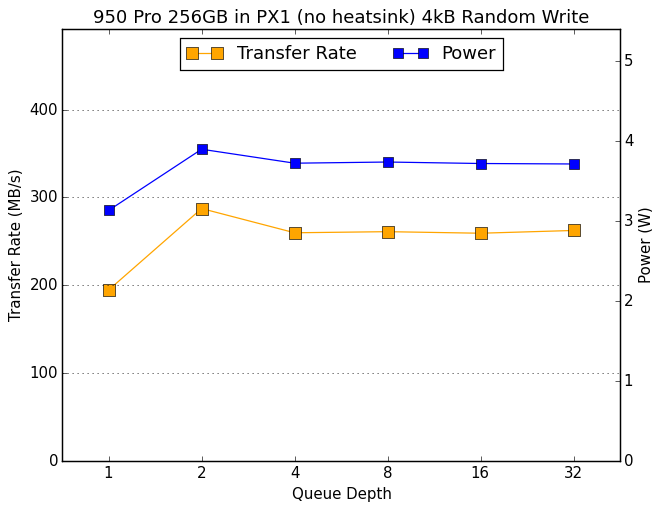 |
|||||||||
| 256GB no heatsink | 512GB no heatsink | ||||||||
| 256GB with heatsink | 512GB with heatsink | ||||||||
Without the heatsink, performance drops starting with a queue depth of 4, indicating that thermal throttling kicks in severely 6 to 9 minutes into the test. With the heatsink, we see that the 512GB model doesn't reach full performance until QD4.
Random Read
The timing and queue depth scaling for testing random reads are handled the same as for random writes, but reads are inherently faster and less power-hungry operations than writes for flash memory, so this is usually a less stressful test even when the drive's throughput is higher. The entire drive is filled before this test and the reads are not restricted to any portion of the drive.
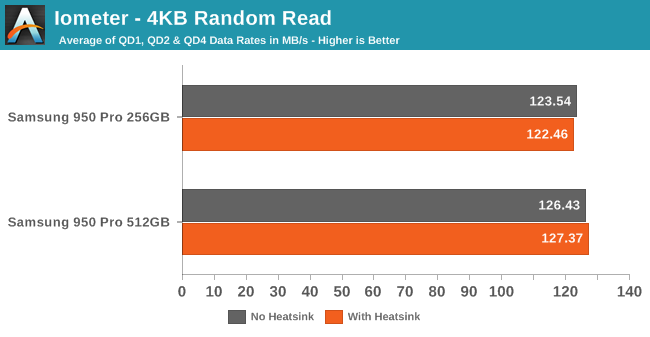
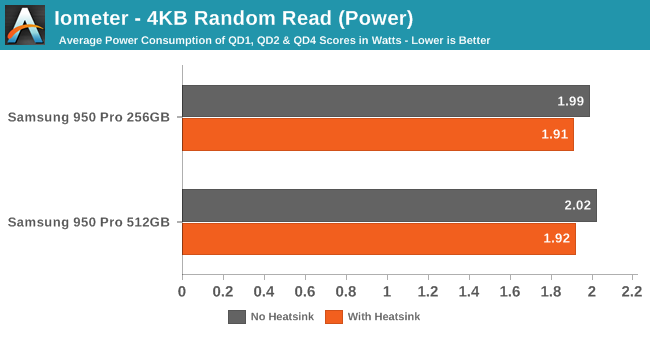
The performance for random reads is unaffected by the heatsink, but the lower operating temperature leads to less transistor leakage and thus slightly improved efficiency.
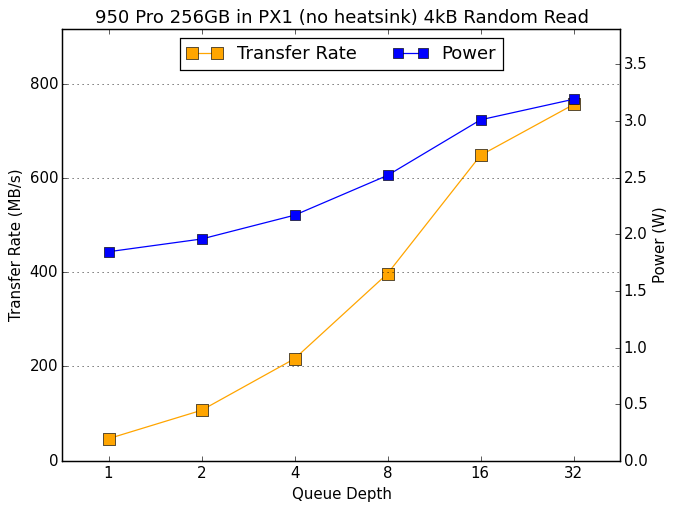 |
|||||||||
| 256GB no heatsink | 512GB no heatsink | ||||||||
| 256GB with heatsink | 512GB with heatsink | ||||||||
The heatsink produces no meaningful changes to the queue depth scaling behavior of random reads, further demonstrating that heat is not a problem for this test.










69 Comments
View All Comments
FunBunny2 - Monday, December 21, 2015 - link
^^that's funny
Breit - Saturday, December 26, 2015 - link
You mean something EKWB did for the Intel 750?http://www.ekwb.com/news/638/19/EK-is-releasing-In...
:D
meacupla - Monday, December 21, 2015 - link
I think this is where all those low profile, frag tape backed, RAM heatsinks, that came along with aftermarket GPU coolers, will come in handy.ironwing - Monday, December 21, 2015 - link
I wonder how much heat 25 LEDs add to a heat sink?mostlyharmless - Monday, December 21, 2015 - link
Yeah, and aren't the fins supposed to be external instead of internal?Billy Tallis - Monday, December 21, 2015 - link
They're really more like ducts than fins as designed. What air does manage to enter the heatsink will not all flow across the entire drive. Some of the fresh cool air will bypass part of the drive, and some of it will just be cooling the heatsink itself. It looks like a design that would be very effective with a lot of airflow, but the intake is pretty small.Billy Tallis - Monday, December 21, 2015 - link
The LEDs draw about 2W. Calculating how much of that gets converted to light that escapes the heatsink is left as an exercise for the reader.MrSpadge - Monday, December 21, 2015 - link
10 - 20 mW each.r3loaded - Monday, December 21, 2015 - link
So what we really need is the 950 Pro in a 2.5 inch drive and the U.2 interface. The bonus is drive capacities of 1TB and maybe even 2TB.Impulses - Monday, December 21, 2015 - link
Great write-up Billy, I appreciate you running the full battery of tests again and re-addressing the Bench scores... A review of a heatsink feels somewhat incomplete without a single temperature measurement tho! SMART readings or something taken with a simple IR thermometer would've been helpful, specially to the kind of DIY'er that's likely to buy this. I'm curious if i can replicate comparable results with a simple stick on heatsink and some airflow, it's particularly relevant for those of us with multiple GPUs where the add in card might put the drive in just as bad of a spot but the M.2 slot might be exposed to more airflow.